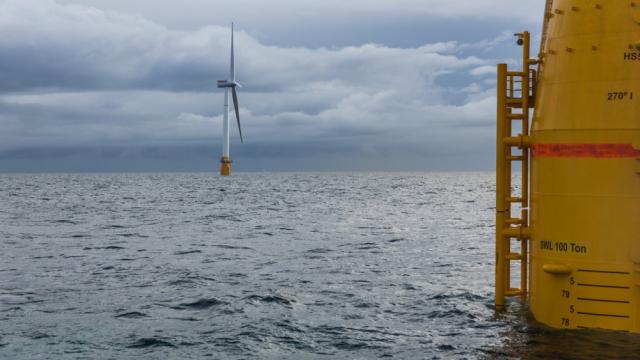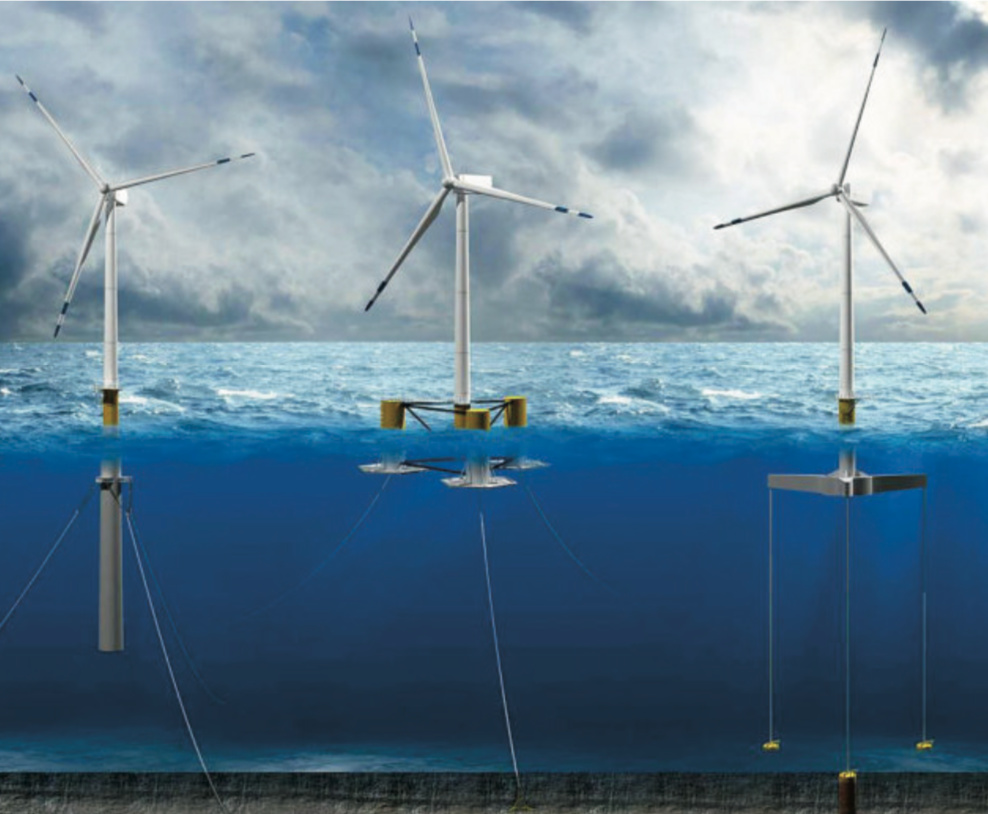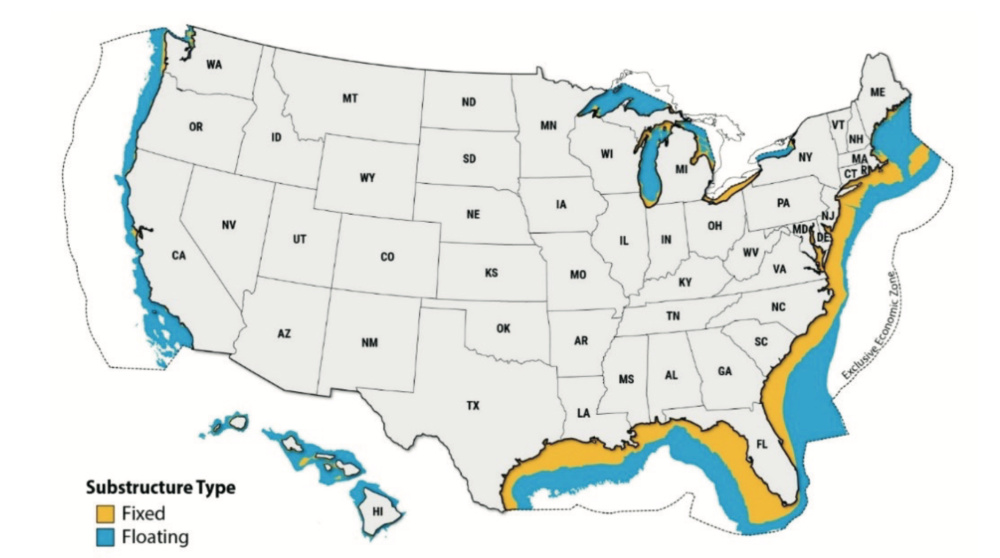
The Equinor-operated, 30-MW Hywind Scotland came online in 2017, marking the world’s first commercial floating wind farm. (Source: Equinor ASA)
The U.S. Department of Energy launched another Energy Earthshot Initiative, this time taking aim at floating offshore wind—initially along the West Coast.
Targeting deep water, the initiative seeks to lower the cost of floating offshore wind energy by at least 70% to $45 per megawatt hour by 2035 to jumpstart development, the Biden administration announced Sept. 15. The goal is to deploy 15 gigawatts (GW), enough to power about 5 million homes, within about 13 years.
The move is part of the administration’s clean energy ambitions that include deploying 30 GW of offshore wind by 2030. It’s an effort to combat climate change and slow global warming.
“The announced lease auction offshore California by year-end positions the West Coast for global leadership in deployment of floating wind.”—Erik Milito, National Ocean Industries Association
Unlike conventional fixed-bottom wind turbines that are attached to the seabed in shallower water, floating turbines are attached to floating structures to harness power in deeper waters such as offshore the West Coast.
“About two-thirds of U.S. offshore wind energy potential exists over waters too deep for today’s fixed-bottom wind turbine foundations secured directly to the sea floor, and instead require floating platforms,” the Energy Department said.
The latest initiative could unlock opportunities offshore states such as Oregon and California, where the Bureau of Ocean Energy Management (BOEM) also announced Sept. 15 a floating wind lease auction will be held by year-end 2022.

California and other states along the West Coast could create the next offshore wind hub, according to the National Ocean Industries Association (NOIA).
“The development and deployment of floating wind technology will be fundamental in tapping wind resources in the vast deepwater areas off our Pacific Coast,” NOIA President Erik Milito said in a statement. “The announced lease auction offshore California by year-end positions the West Coast for global leadership in deployment of floating wind.”
Today, floating wind is a nascent technology with most commercial developments in early phases. Only 0.1 GW of floating offshore wind has been deployed globally to date, while more than 50 GW of fixed-bottom offshore wind has been deployed, according to the U.S.
The world’s first commercial floating wind farm—the Equinor-operated, 30-MW Hywind Scotland—came online in 2017. Equinor and partner Masdar invested NOK 2 billion (US$200 million) on the 5-turbine wind farm.

With its latest move, the U.S. is also committing nearly $50 million for R&D, including from the Bipartisan Infrastructure Law.
Most of the funds to be awarded are part of the DOE Advanced Research Projects Agency’s Aerodynamic Turbines, Lighter and Afloat, with Nautical Technologies and Integrated Servo-control (ATLANTIS) program. Funds will also go toward West Coast ports and transmission analyses, a floating offshore wind array design project and a competition focused on floating platform technologies, domestic manufacturing and commercialization among other areas.
The Floating Offshore Wind Shot comes about a week after the DOE unveiled the Enhanced Geothermal Shot. It aims to lower the cost of enhanced geothermal systems by 90% to $45 per megawatt hour by 2035.
Recommended Reading
Kimmeridge Fast Forwards on SilverBow with Takeover Bid
2024-03-13 - Investment firm Kimmeridge Energy Management, which first asked for additional SilverBow Resources board seats, has followed up with a buyout offer. A deal would make a nearly 1 Bcfe/d Eagle Ford pureplay.
Laredo Oil Subsidiary, Erehwon Enter Into Drilling Agreement with Texakoma
2024-03-14 - The agreement with Lustre Oil and Erehwon Oil & Gas would allow Texakoma to participate in the development of 7,375 net acres of mineral rights in Valley County, Montana.
SLB’s ChampionX Acquisition Key to Production Recovery Market
2024-04-21 - During a quarterly earnings call, SLB CEO Olivier Le Peuch highlighted the production recovery market as a key part of the company’s growth strategy.
Hess Corp. Boosts Bakken Output, Drilling Ahead of Chevron Merger
2024-01-31 - Hess Corp. increased its drilling activity and output from the Bakken play of North Dakota during the fourth quarter, the E&P reported in its latest earnings.
The OGInterview: Petrie Partners a Big Deal Among Investment Banks
2024-02-01 - In this OGInterview, Hart Energy's Chris Mathews sat down with Petrie Partners—perhaps not the biggest or flashiest investment bank around, but after over two decades, the firm has been around the block more than most.






